 Why You Can Trust CNET
Why You Can Trust CNET
Experts
Tests per laptop
Hours testing
CNET’s expert staff reviews and rates dozens of new products and services each month, building on more than a quarter century of expertise.
What to consider
Price
Operating System
Size
Screen
Processor
Graphics
Memory
Storage
What is the best Windows laptop?
The Acer Swift X 14 is our current pick as the best overall Windows laptop for its strong performance and gorgeous OLED display. The ultraportable’s overall look is a bit uninspired, but the laptop weighs less than 3.5 pounds and is quite portable while also serving up a relatively roomy 14.5-inch, 16:10 display. And it’s no ordinary display but a high-resolution OLED panel that produces a stellar picture with vivid colors and excellent contrast. Powering the display is a powerful CPU/GPU duo that makes the Swift X 14 a highly capable and versatile machine for a wide range of users, including content creators and casual gamers. And the Swift X 14 offers all of this portability, OLED goodness and strong performance for a reasonable price of $1,500 and can usually be found for less than that.
While the Swift X 14 would make a good match for many people shopping for a Windows laptop, there are other models we’ve tested and reviewed that are great fits for narrower audiences, from budget models and 2-in-1 convertibles to high-powered gaming laptops. With decades of experience testing and reviewing laptops, our laptop experts conduct performance testing under controlled conditions in the CNET Labs and also perform extensive hands-on tests to assess the design, features and performance of each laptop we review.
You’ll find a good number of recommendations here, but we also have more specific picks in different laptop categories, starting with the best overall laptop and also including best gaming laptop, best cheap gaming laptop, best laptop for college students and best two-in-one laptop. If you narrowed it to a specific brand, check out our picks for best Dell laptop and best HP laptop. And beyond Windows, we have recommendations for the best MacBook and best Chromebook.
As noted above, the Acer Swift X 14 is our top pick among Windows laptops for its strong overall performance, beautiful OLED display and sensible price. The $1,500 model we tested features a 13th-gen Core i7 H-series processor and Nvidia Geforce RTX 4050 graphics. With this CPU/GPU duo, the Swift X 14 delivers unmatched performance in an ultraportable. And it sits in the sweet spot of providing a display large enough to work on for long stretches without feeling cramped while also being lightweight enough to be easily portable. Gamers and creative types are sure to make use of the RTX 4050 GPU, but if you don’t need that graphics jolt, you can get the same awesome OLED display with integrated graphics for less in the Swift Go 14. And if you like the idea of the Swift X 14 but want a larger display, there’s the Swift X 16.
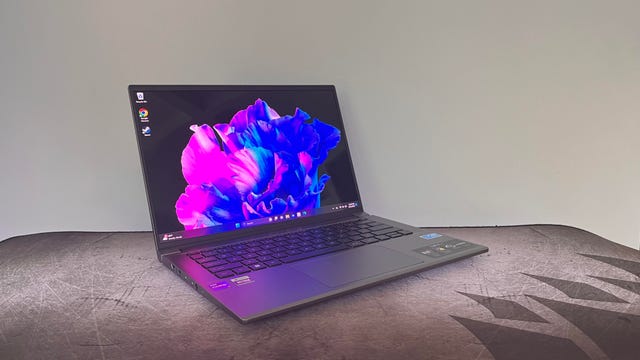
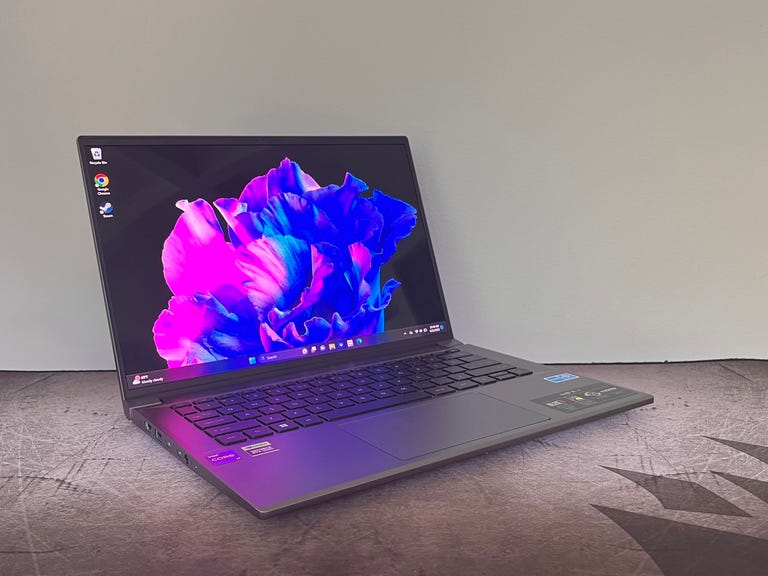
Best ultraportable laptop
Asus Zenbook S 13 OLED
It’s not easy to find an ultralight laptop that still feels sturdy, but the Asus Zenbook S 13 OLED does. At just 2.2 pounds, the 13.3-inch laptop is lighter than Apple’s MacBook Air, making it the perfect little travel companion. Despite its compact footprint, Asus squeezed in a comfortable keyboard and a big touchpad. And it features a 13.3-inch, 2.8K OLED display with excellent color and contrast. Based on an efficient 13th-gen Core i7 U-series processor, the Zenbook S 13 OLED offers long battery life, which is not always the case with an OLED laptop. There’s nothing quite like the Zenbook S 13 OLED at its price. It’s a commuter’s delight.


Best compact laptop less than $1,000
HP Pavilion Aero 13
HP packed a lot of value into the Aero 13: Eye-pleasing magnesium-aluminum chassis, strong processing performance, long battery life, a bright, colorful display and a weight of just 2.2 pounds. Amazingly, considering all that it offers, it has a regular starting price of less than $800 but it’s regularly on sale for less than $600.
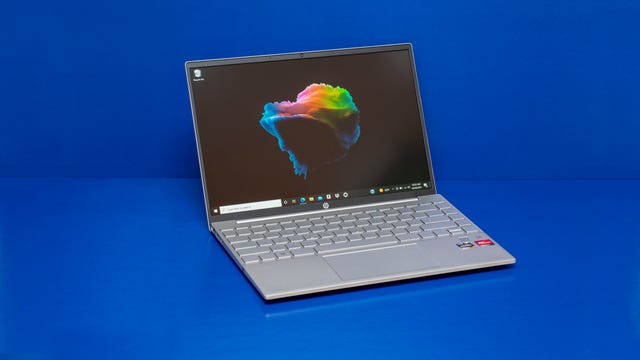
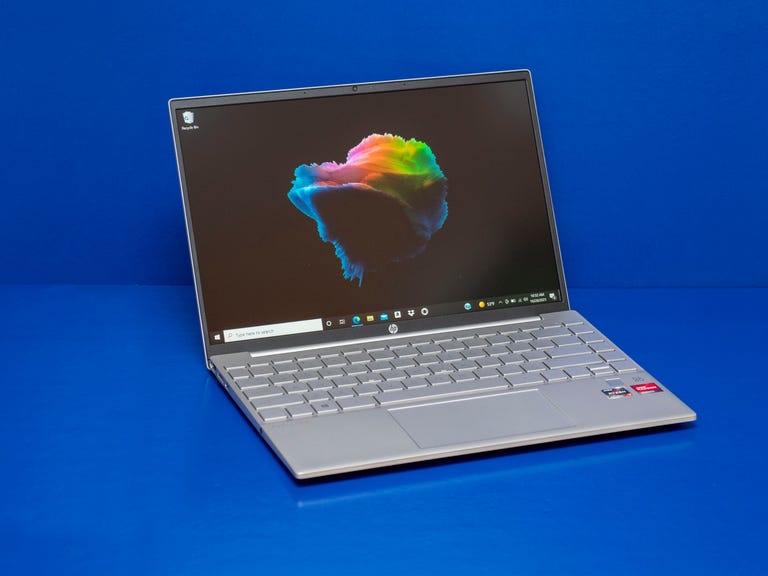
Best big-screen-but-still-portable laptop
LG Gram 17
The LG Gram 17 is the rare large-screen laptop that you can easily take with you. With an expansive 17-inch, 16:10 display and scant 3.2-pound weight, the Gram 17 is impossibly thin and light. It also boasts lengthy battery life, making it a great choice as an on-the-go laptop that provides ample room on which to work. And with the option to outfit it with RTX 3050 graphics, it’s suitable for content creators and even those who might like to dabble in a bit of casual gaming. It’s pricey but worth the elevated cost if you are looking for a roomy display in a lightweight package with a long runtime.
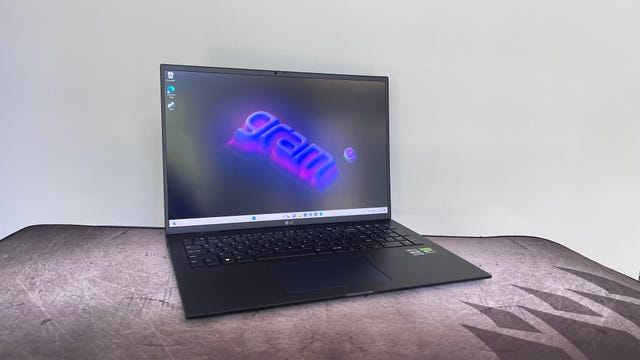
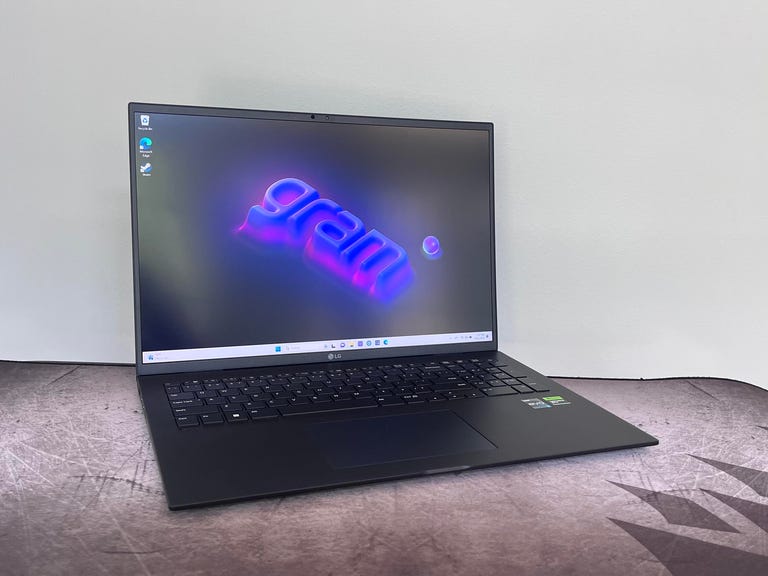
Best entry-level laptop
Acer Swift 3
Available with either AMD Ryzen or Intel Core processors, this 14-inch laptop gives you more screen to work on than 13-inch laptops, but is still incredibly lightweight — less than 3 pounds. The bigger display is nice, too, covering 100% sRGB color gamut — better than you typically find at its starting price under $600. It also has a backlit keyboard, a fingerprint reader and USB Type-C and HDMI ports, too. A more recent model that the one we reviewed in 2020 is available for a reasonable $569 at Amazon with a 12th-gen Core i5 CPU and 16GB of RAM. It also supplies a 512GB solid-state drive. That’s double the memory allotment and SSD capacity you usually find at this price.

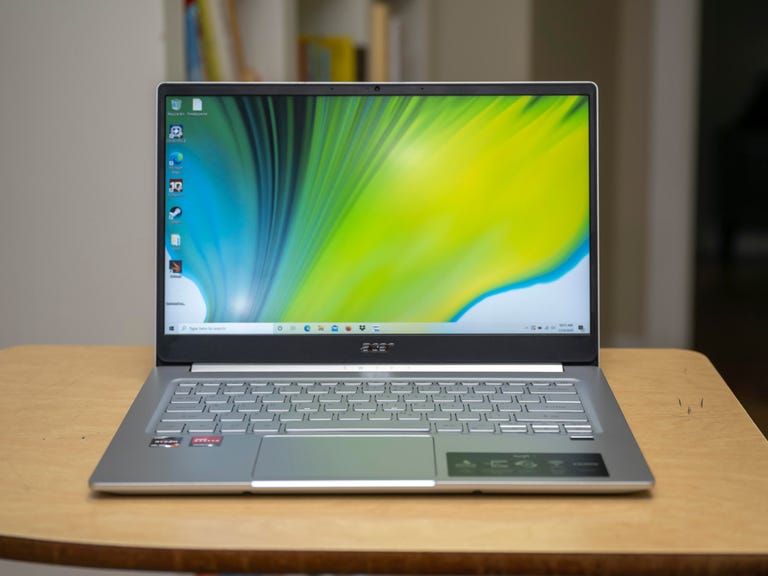
Best budget gaming laptop
Dell G15/G16
The 15.6-inch G15 series and 16-inch G16 line both deliver the latest CPUs and GPUs and roomy displays. Unless you plan to take the laptop with you on daily trips, we recommend the larger G16 model. Not only is its 16-inch display slightly larger on the diagonal, but it also has the taller 16:10 aspect ratio that makes it much roomier. And a similar G16 model costs only $50 or $100 more than a G15 model. Both offer 13th-gen Intel processors along with RTX 4050 and 4060 GPUs — Nvidia’s latest graphics processors for budget gaming laptops. The G16 lets you go up to an RTX 4070 GPU. Dell’s G15 and G16 models are basically more budget-friendly versions of those from its Alienware division but still capable of playing the latest AAA titles.
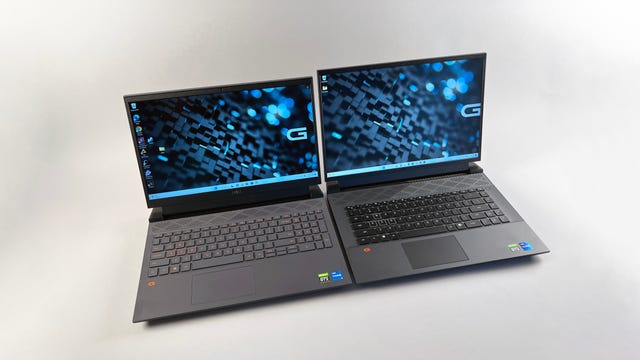
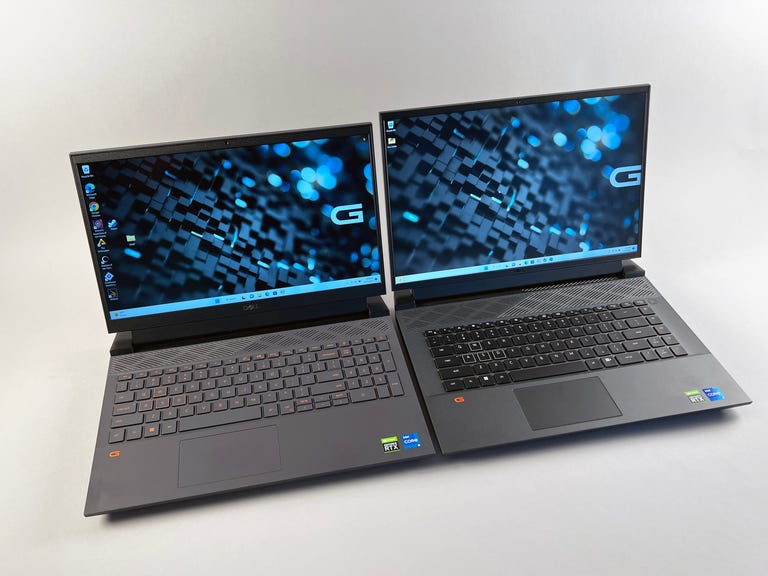
Best gaming laptop
Alienware m18
One of the first of the new generation of 18-inch laptops, the m18 can get expensive if you push it up to a high configuration — an RTX 4090 and Core i9-13900HX will get you to $3,300 even without a lot of memory or storage. But if the big screen is most important to you, it starts at $1,900 with a respectable i7-13700HX and RTX 4060. Don’t expect great battery life, and the fans can get loud when you’re pushing it.
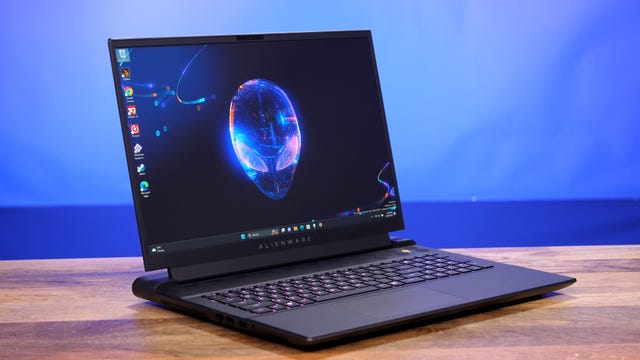
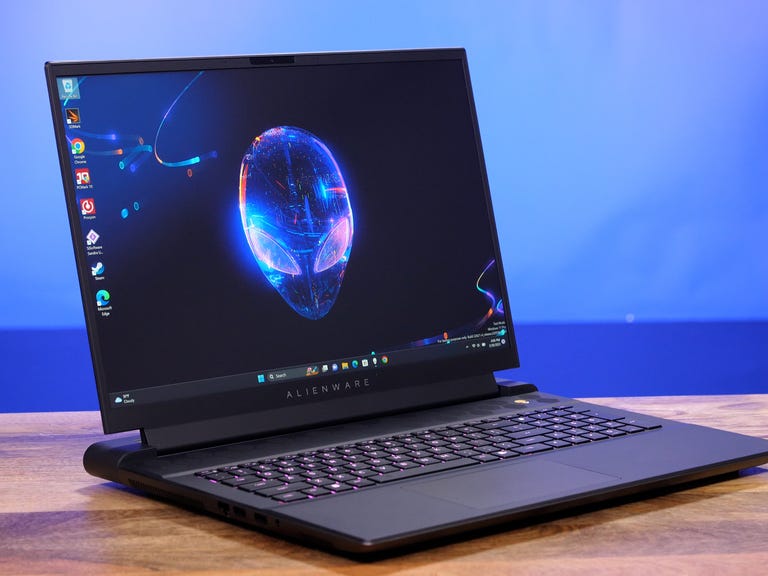
Best laptop for work and gaming
Samsung Galaxy Book 3 Ultra
Samsung (with help from Intel and Microsoft) has created a near-seamless experience for using the Galaxy Book 3 Ultra with its other Galaxy devices. That means you can do things like quickly share files between your Galaxy phone, Tab or Galaxy Book, use the Galaxy Book’s keyboard and trackpad to control your other devices, instantly pair your Galaxy Bud earbuds as soon as you put down your phone and open the Galaxy Book, and the list goes on and on. But even if you don’t own another Samsung device, the Ultra is still a great pick if you need a high-end 16-inch display covering 100% DCI-P3 color space, strong processing and graphics performance and relatively long battery life, all wrapped up in a thin, stylish body that weighs just 4 pounds.
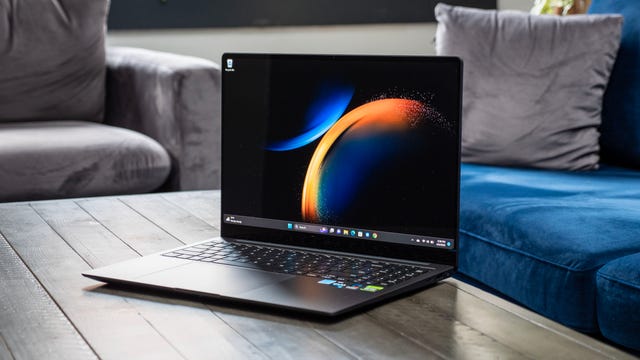
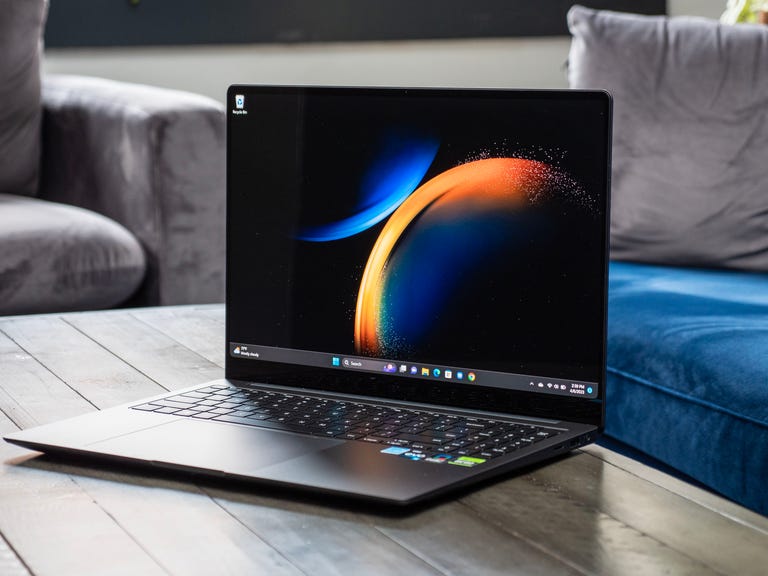
Best MacBook Pro 14-inch alternative
HP Dragonfly Pro
The 14-inch Dragonfly Pro is a MacBook alternative that boasts a similarly clean and rigid design and targets the same mainstream “pro” users. And priced at a reasonable $1,400, it costs hundreds less than the 14-inch MacBook Pro. You may not use its gimmicky hotkeys that connect you to HP support, but you will undoubtedly love the look and feel of this minimalistic, matte-black laptop. And it’s more than just a pretty face. It offers competitive performance with its Ryzen 7 7736U processor and also supplies a high-res 1440p webcam and quad speakers that deliver rich, full sound. The Dragonfly Pro is about as close as you can get to a MacBook Pro in a Windows laptop.
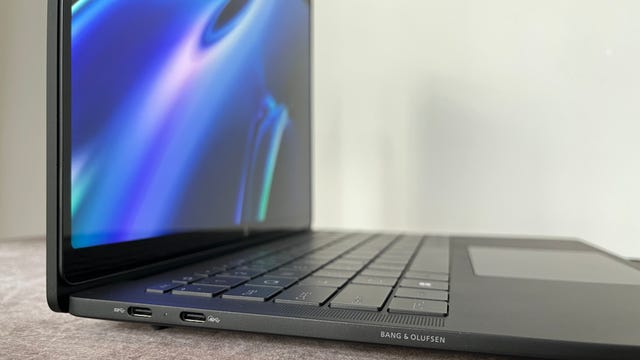

Best business laptop
Lenovo ThinkPad X1 Carbon Gen 11
The Lenovo ThinkPad X1 Carbon Gen 11 is the company’s flagship business ultraportable and has become the standard against which other business ultraportables are measured. Although it delivers no surprises or revolutionary upgrades from past iterations, its security, build quality and performance remain excellent. Its 14-inch display and 2.5-pound weight are the sweet spot of enough screen space to work long stretches without needing to connect to an external display, while also being light enough for daily travel. With an industry-best keyboard, long battery life and greener construction, Lenovo’s latest X1 Carbon is a near-perfect business ultraportable.


Best 2-in-1 for less than $1,000
Lenovo Yoga 7i
This thin, 3-pound convertible is a solid choice for anyone who needs a laptop for office or schoolwork. The all-metal chassis gives it a premium look and feel, and it has a comfortable keyboard and a responsive, smooth precision touchpad. Though it’s light on extra features compared to its premium linemate, the Yoga 9i, it does have one of Lenovo’s sliding shutters for its webcam that gives you privacy when you want it. The latest version with 13th-gen Intel processors starts at $900 at Best Buy and can frequently be found on sale for less.
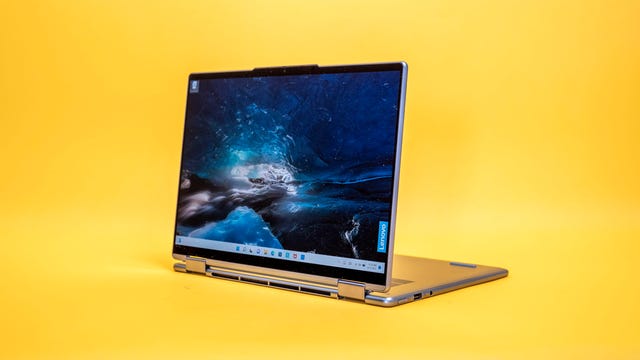
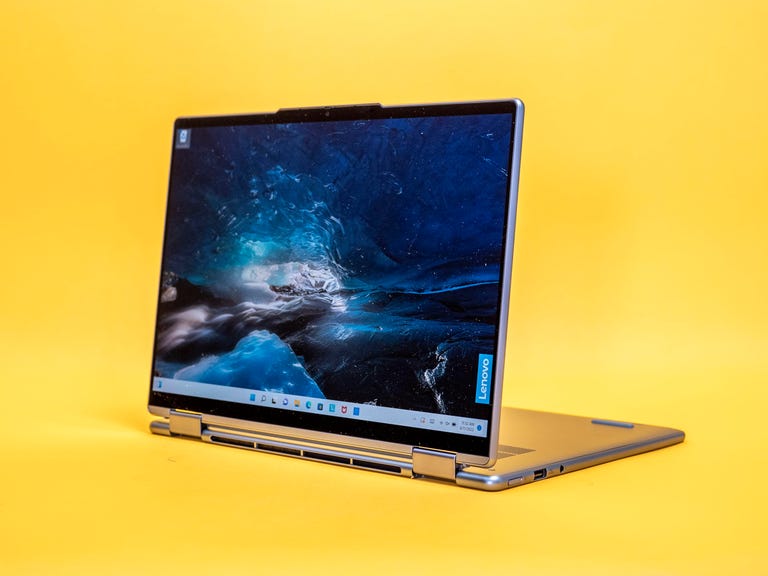
Best premium 2-in-1
Lenovo Yoga 9i Gen 7
Lenovo launched the Yoga line 10 years ago with Windows 8 and now, with Windows 11, the flexibility of the design has only gotten better. The company’s flagship 14-inch Yoga 9i now has an updated look with comfortable, rounded edges and 13th-gen Intel processors that give it a big multicore performance jump. A beautiful OLED display and improved audio make it excellent for work, video conferences and entertainment. Lenovo includes an active pen and a laptop sleeve to complete the premium package.
The powerful speakers do add some vibration to the palm rests when turned up and Lenovo has cluttered the laptop with pitches for optional services and software. But, overall, the latest Yoga 9i is the two-in-one convertible laptop to beat.
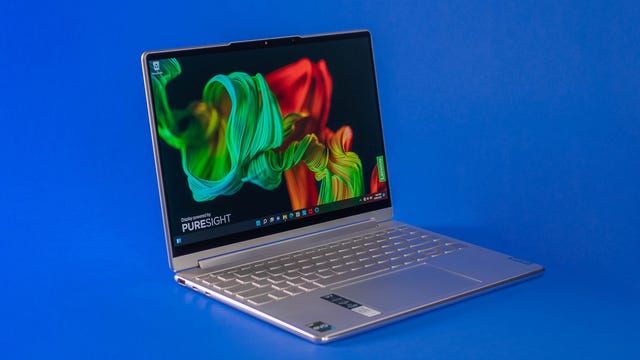

Other laptops we’ve tested
Acer Swift Go 16: It’s is a good choice for those who want a big-screen laptop with productivity power, but it gets lost between Acer’s own 16-inch Swift X and Swift Edge laptops.
Dell Inspiron 16 Plus 7630: Dell’s more budget-friendly content-creation laptop offers powerful discrete graphics and a large, 16-inch panel with an improved 120Hz refresh rate, but I still want some display upgrade options.
Lenovo Yoga 7i 16: The 14-inch Yoga 7i has long been a favorite for offering more for less. The “more” on this version includes a 16-inch display with a low resolution that makes text fuzzy and it’s an awkward size for a two-in-one.
Asus ExpertBook B9450: This 14-inch business ultraportable is impressively light and eminently portable but costs too much when you consider the previous-gen CPU and a display that feels constricted.
Asus VivoBook F1502ZA: We liked the design and comfortable keyboard on our review unit, but its performance and display came up short.
Lenovo Slim Pro 7: Much like the Acer Swift X, the Slim Pro 7 gets you good performance in a small body, but the other parts aren’t quite as nice.
Asus VivoBook 16X OLED: Outside of its affordability for a big 16-inch OLED display, this VivoBook was a letdown.
HP Victus 15: HP’s entry-level gaming laptop is a bargain, but the Dell G15 outclasses in design and features.
Dell XPS 17 9730: The performance and battery life are spot-on but the lack of an OLED display option and an outdated 720p webcam hold it back.
Asus ExpertBook B9450: Asus’ ultralight business laptop is sturdy and has a long battery life, but its 16:9 display, older processor and grainy 720p disappointed.
Microsoft Surface Laptop Studio 2: The display design is still terrific, but it’s expensive for what you’re getting and falling behind its competition.
How we test laptops
The review process for laptops consists of two parts: performance testing under controlled conditions in the CNET Labs and extensive hands-on use by our reviewers. This includes evaluating a device’s aesthetics, ergonomics and features with respect to price. A final review verdict is a combination of both objective and subjective judgments.
We test all laptops with a core set of benchmarks, including Primate Labs Geekbench 5 and 6, Cinebench R23, PCMark 10, a variety of 3DMark benchmarks (whichever can run on the laptop), UL Procyon Photo and Video (where supported), and our own battery life test. If a laptop is intended for gaming, we’ll also run benchmarks from Guardians of the Galaxy, The Rift Breaker (CPU and GPU) and Shadow of the Tomb Raider.
For the hands-on, the reviewer uses it for their work during the review period, evaluating how well the design, features (such as the screen, camera and speakers) and manufacturer-supplied software operate as a cohesive whole. We also place importance on how well they work given their cost and where the manufacturer has potentially made upgrades or tradeoffs for its price.
The list of benchmarking software and comparison criteria we use changes over time as the devices we test evolve. You can find a more detailed description of our test methodology on our How We Test Computers page.
Factors to consider
There are a ton of laptops on the market at any given moment, and almost all of those models are available in multiple configurations to match your performance and budget needs. So if you’re feeling overwhelmed with options when looking for a new laptop, it’s understandable. To help simplify things for you, here are the main things you should consider when you start looking.
Price
The search for a new laptop for most people starts with price. If the statistics chipmaker Intel and PC manufacturers hurl at us are correct, you’ll be holding onto your next laptop for at least three years. If you can afford to stretch your budget a little to get better specs, do it. And that stands whether you’re spending $500 or more than $1,000. In the past, you could get away with spending less upfront with an eye toward upgrading memory and storage in the future. But laptop makers are increasingly moving away from making components easily upgradable, so again, it’s best to get as much laptop as you can afford from the start.
Generally speaking, the more you spend, the better the laptop. That could mean better components for faster performance, a nicer display, sturdier build quality, a smaller or lighter design from higher-end materials or even a more comfortable keyboard. All of these things add to the cost of a laptop. I’d love to say $500 will get you a powerful gaming laptop, for example, but that’s not the case. Right now, the sweet spot for a reliable laptop that can handle average work, home office or school tasks is between $700 and $800 and a reasonable model for creative work or gaming upwards of about $1,000. The key is to look for discounts on models in all price ranges so you can get more laptop for less.
Operating system
Choosing an operating system is part personal preference and part budget. For the most part, Microsoft Windows and Apple’s MacOS do the same things (except for gaming, where Windows is the winner), but they do them differently. Unless there’s an OS-specific application you need, go with the one you feel most comfortable using. And if you’re not sure which that is, head to an Apple store or a local electronics store and test them out. Or ask friends or family to let you test theirs for a bit. If you have an iPhone or iPad and like it, chances are you’ll like MacOS, too.
But when it comes to price and variety (and, again, PC gaming), Windows laptops win. If you want MacOS, you’re getting a MacBook. While Apple’s MacBooks regularly top our best lists, the least expensive one is the M1 MacBook Air for $999. It is regularly discounted to $750 or $800, but if you want a cheaper MacBook, you’ll have to consider older refurbished ones.
Windows laptops can be found for as little as a couple of hundred dollars and come in all manner of sizes and designs. Granted, we’d be hard-pressed to find a $200 laptop we’d give a full-throated recommendation to, but if you need a laptop for online shopping, email and word processing, they exist.
If you are on a tight budget, consider a Chromebook. ChromeOS is a different experience than Windows; make sure the applications you need have a Chrome, Android or Linux app before making the leap. But if you spend most of your time roaming the web, writing, streaming video or using cloud-gaming services, they’re a good fit.
Size
Remember to consider whether having a lighter, thinner laptop or a touchscreen laptop with a good battery life will be important to you in the future. Size is primarily determined by the screen — hello, laws of physics — which in turn factors into battery size, laptop thickness, weight and price. And keep in mind other physics-related characteristics, such as an ultrathin laptop isn’t necessarily lighter than a thick one, you can’t expect a wide array of connections on a small or ultrathin model and so on.
Screen
When it comes to deciding on a screen, there are a myriad number of considerations: how much you need to display (which is surprisingly more about resolution than screen size), what types of content you’ll be looking at and whether or not you’ll be using it for gaming or creative work.
You really want to optimize pixel density; that is, the number of pixels per inch the screen can display. Though there are other factors that contribute to sharpness, a higher pixel density usually means sharper rendering of text and interface elements. (You can easily calculate the pixel density of any screen at DPI Calculator if you don’t feel like doing the math, and you can also find out what math you need to do there.) We recommend a dot pitch of at least 100 pixels per inch (ppi) as a rule of thumb.
Because of the way Windows and MacOS scale for the display, you’re frequently better off with a higher resolution than you’d think. You can always make things bigger on a high-resolution screen, but you can never make them smaller — to fit more content in the view — on a low-resolution screen. This is why a 4K, 14-inch screen may sound like unnecessary overkill, but may not be if you need to, say, view a wide spreadsheet.
If you need a laptop with relatively accurate color, that displays the most colors possible or that supports HDR, you can’t simply trust the specs — not because manufacturers lie, but because they usually fail to provide the necessary context to understand what the specs they quote mean. You can find a ton of detail about considerations for different types of screen uses in our monitor buying guides for general purpose monitors, creators, gamers and HDR viewing.
Processor
The processor, aka the CPU, is the brains of a laptop. Intel and AMD are the main CPU makers for Windows laptops. Both offer a staggering selection of mobile processors. Making things trickier, both manufacturers have chips designed for different laptop styles, like power-saving chips for ultraportables or faster processors for gaming laptops. Their naming conventions will let you know what type is used. You can head to Intel’s or AMD’s sites for explanations so you get the performance you want. Generally speaking, though, the faster the processor speed and the more cores it has, the better the performance will be.
Apple makes its own chips for MacBooks, which makes things slightly more straightforward. But, like Intel and AMD, you’ll still want to pay attention to the naming conventions to know what kind of performance to expect. Apple uses its M-series chipsets in Macs. The entry-level MacBook Air uses an M1 chip with an eight-core CPU and seven-core GPU. The current models have M2-series silicon that starts with an eight-core CPU and 10-core GPU and goes up to the M2 Max with a 12-core CPU and a 38-core GPU. Again, generally speaking, the more cores it has, the better the performance.
Graphics
The graphics processor (GPU) handles all the work of driving the screen and generating what gets displayed, as well as speeding up a lot of graphics-related (and increasingly, AI-related) operations. For Windows laptops, there are two types of GPUs: integrated (iGPU) or discrete (dGPU). As the names imply, an iGPU is part of the CPU package, while a dGPU is a separate chip with dedicated memory (VRAM) that it communicates with directly, making it faster than sharing memory with the CPU.
Because the iGPU splits space, memory and power with the CPU, it’s constrained by the limits of those. It allows for smaller, lighter laptops, but doesn’t perform nearly as well as a dGPU. In fact, there are some games and creative software that won’t run unless they detect a dGPU or sufficient VRAM. Most productivity software, video streaming, web browsing and other nonspecialized apps will run fine on an iGPU, though.
For more power-hungry graphics needs, like video editing, gaming and streaming, design and so on, you’ll need a dGPU; there are only two real companies that make them, Nvidia and AMD, with Intel offering some based on the Xe-branded (or the older UHD Graphics branding) iGPU technology in its CPUs.
Memory
For memory, we highly recommend 16GB of RAM (8GB absolute minimum). RAM is where the operating system stores all the data for currently running applications, and it can fill up fast. After that, it starts swapping between RAM and SSD, which is slower. A lot of sub-$500 laptops have 4GB or 8GB, which in conjunction with a slower disk can make for a frustratingly slow Windows laptop experience. Also, many laptops now have the memory soldered onto the motherboard. Most manufacturers disclose this, but if the RAM type is LPDDR, assume it’s soldered and can’t be upgraded.
However, some PC makers will solder memory on and also leave an empty internal slot for adding a stick of RAM. You may need to contact the laptop manufacturer or find the laptop’s full specs online to confirm. And check the web for user experiences, because the slot may still be hard to get to, it may require nonstandard or hard-to-get memory or other pitfalls.
Storage
You’ll still find cheaper hard drives in budget laptops and larger hard drives in gaming laptops, but faster solid-state drives (SSDs) have all but replaced hard drives in laptops. They can make a big difference in performance. But not all SSDs are equally speedy, and cheaper laptops typically have slower drives; if the laptop only has 4GB or 8GB of RAM, it may end up swapping to that drive and the system may slow down quickly while you’re working.
Get what you can afford, and if you need to go with a smaller drive, you can always add an external drive or two down the road or use cloud storage to bolster a small internal drive. The one exception is gaming laptops: We don’t recommend going with less than a 512GB SSD unless you really like uninstalling games every time you want to play a new game.


